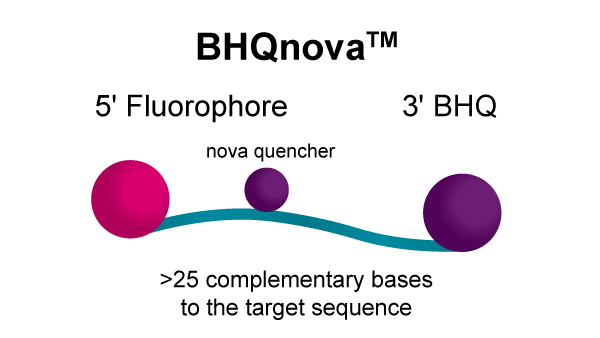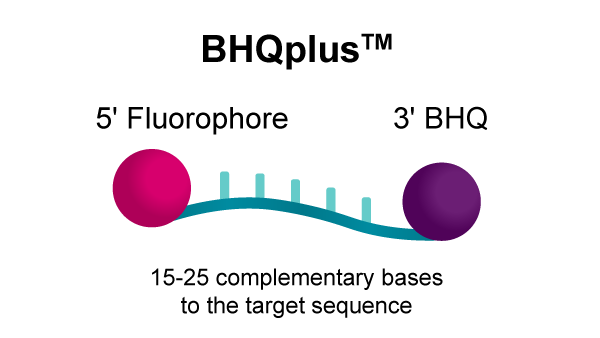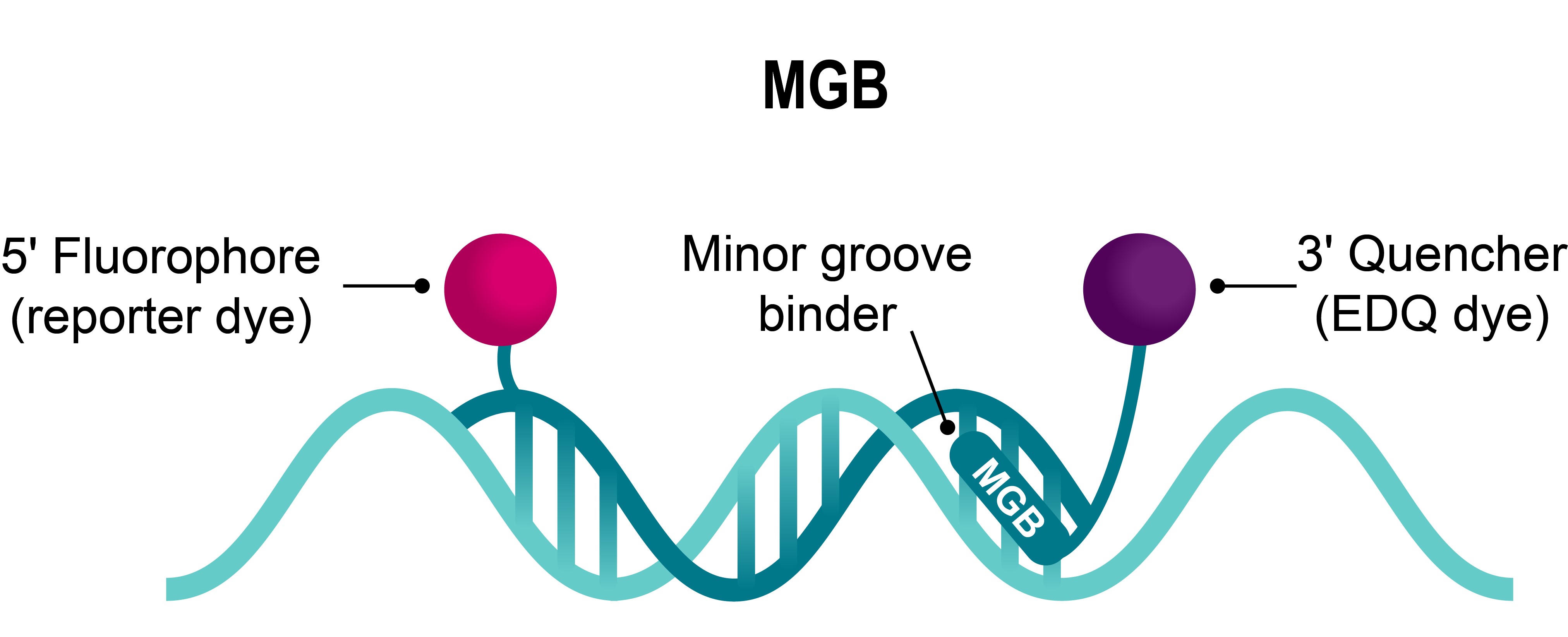
While most probe types will deliver some degree of results, optimisation requires selecting the ideal probe technology based on your experimental goals and commercial vision. Try multiple probe types early in assay development to determine which option aligns with your requirements.

BHQ Probes are traditional dual-labelled hydrolysis probes with a 5′ fluorophore dye and a 3′ Black Hole Quencher (BHQ). We offer a complete suite of fluorescent dyes spanning the entire visible spectrum. Take advantage of simple probe design with consistent and reliable performance. These probes excel at detecting the presence and quantifying the amount of a specific target sequence.

When designing long probes, double-quenched BHQnova Probes can significantly increase quenching efficiency and reduce background. These dual-labelled hydrolysis probes have a 5′ fluorophore dye, a 3′ BHQ and an internal nova quencher. With enhanced sensitivity, BHQnova Probes are well suited for gene expression analysis, copy number variation, presence/absence and infectious disease detection.

Dual-labelled BHQplus hydrolysis Probes consist of a 5' fluorescent reporter dye, a 3' BHQ and modified C and T nucleotides throughout the probe sequence that are responsible for enhanced probe-target binding stability. This proprietary duplex-stabilising chemistry permits the design of shorter probes, making BHQplus Probes ideal for detecting difficult target sequences such as SNPs and AT-rich sequences.

These dual-labelled hydrolysis probes consist of a 5′ fluorescent reporter dye and 3′ Eclipse Dark Quencher (EDQ) conjugated to a MGB moiety that stabilises the probe-target duplex, which effectively increases the Tm of the duplex and enables a shorter probe design, improved sequence specificity and assay sensitivity. This probe type is ideal for supporting detection of SNPs and difficult targets such as AT-rich sequences.

These dual-labelled hydrolysis probes include up to seven LNA bases (RNA bases “locked” in the C3′-endo conformation) in the probe. Each LNA insertion increases the Tm of the probe-target duplex by 2-8 °C, stabilising the duplex, which enables a shorter probe design, improved sequence specificity and assay sensitivity. LNA probes offer precise Tm control in SNP genotyping and gene expression assays.
![]()
Dual-labelled Molecular Beacon probes form a stem-loop (hairpin) structure, bringing the reporter dye and quencher into proximity. The loop region contains a sequence that hybridises to the target, while the complementary sequences at both ends form the stem. These probes generate fluorescence under non-hydrolytic conditions, increase specificity and sensitivity and enable a post-PCR melt curve.

Scorpions Primers combine primer and probe in one molecule with the primer at the 3' and a stem-loop structure at the 5'. The loop region hybridises to the target, while the complementary sequences at both ends form the stem bringing the dye and quencher into proximity. These probes fluoresce under non-hydrolytic conditions, increase specificity and sensitivity, and enable a post-PCR melt curve.
We provide industry-leading oligo synthesis expertise for every custom probe synthesis. Please contact us for more information about dye offerings outside of our standard probe portfolio, custom formulation, large scale synthesis and other probe chemistries such as FPG/RPA probes, LightCycler (FRET) probes, Amplifluor oligos, HyBeacon probes or probes for commercial use made under ISO 13485.
Additional support tools

